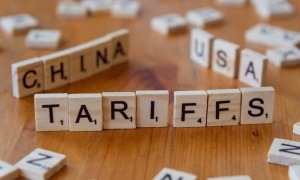Insolvency by the Numbers #53: NZ Insolvency Statistics April 2025
If there was a cliff for the insolvency figures to jump off it would be called “Public Holidays” and they have effects across the board this month, but people taking 10 days in a row off will do that. April felt suspiciously like Christmas where you have a month’s work to do in half the time, so naturally some things get put off to next month.
Coupled with the shorter month we also had global factors playing havoc with the economy and adding to the uncertainty for businesses, a number have started to take the wait and see approach to see what washes out rather than taking action to deal with problems they are facing.
Winding Up Applications
April saw a further drop in appointments for the year, but we remain slightly above the prior year to date figures. Uncertainty and a short month dropping the figures back to 2023 levels.
For the first time this year we have come in under triple figures. I expect we will climb back up next month and will likely see a bounce back for the rest of the year. IRD continues to apply pressure and the their remains a lot of distress in the economy while consumers have not opened their wallets just yet.
IRD made up 47 of the 73 applications for the month, with non IRD applications cut in half when compared to the previous month. IRD continue to be well above the past 5 years cumulative total, so it is safe to assume they are continuing to apply pressure to derelict debtors, this is supported by the coms they are putting out on their increased compliance and recovery work in 2025.
The IRD has continued their 25-month streak of having more applications than all other creditors.
Personal Receiverships
April saw 5 more appointments putting up over double that stats seen in previous years to April figures. As more companies continue to default on their lending personal security agreements are being called up, we believe this will continue to track towards exceeding 2024 figures.
Company Insolvencies – Liquidations, Receiverships, and Voluntary Administrations
What did April look like? It mirrored the April 2024 figures. What was this driven by? Public Holidays leaving less actual working days and a fear bit of uncertainty in the economy (some global and some local) helping stakeholders avoid the difficult decisions.
Year to date insolvency figures are just behind those seen in and around 2013 – 2015 and remain slightly above those seen in 2024.
There was a large drop in court appointed liquidations in April with only 28 in the month, well down from February’s 114 and March’s 85. This in turn made the insolvency shareholder liquidation portion (above) appear a lot larger for the month. Another effect of a lot of Public Holidays in the month is the courts not being open, unsurprisingly it is difficult to have court appointed liquidations with the court is closed.
Personal Insolvencies – Bankruptcy, No Asset Procedure and Debt Repayment Orders
Personal insolvency appointment figures for Bankruptcy, NAP and DRO remain low as seen above. You will note that while IRD has continued to push corporate winding ups, this has not yet been felt in the personal insolvency space with a rise in court appointed bankruptcies.
Where to from here?
While figures have been dropping in the last few months we are not out of the woods yet and will expect to see a turnaround towards the middle of the year along with returning to higher insolvency levels.
If you want to have a chat about any points raised or an issue you may have you can call on 0800 30 30 34 or email This email address is being protected from spambots. You need JavaScript enabled to view it..
Global Ripples: How U.S. Tariffs on China Could Impact New Zealand Businesses—and Insolvencies
The escalating tariff regime between the United States and China continues to cast long shadows across global trade routes—and New Zealand is far from immune. With the U.S. implementing new or increased tariffs on Chinese goods, the indirect consequences are set to impact a range of New Zealand industries, raising the risk of insolvency in already vulnerable sectors.
Indirect Shockwaves: How U.S.-China Tariffs Affect NZ
New Zealands economy is deeply interconnected with both the U.S. and China. The tariff regime creates cost distortions, re-routes global trade flows, and introduces volatility to commodity markets. These dynamics are especially relevant for New Zealand exporters, importers, and manufacturers.
Industries most at risk include:
- Exporters of Raw Materials & Agricultural Commodities: A slowdown in China’s manufacturing demand, due to reduced exports to the U.S. and not quickly finding substitute markets, could lead to lower demand for New Zealand’s raw materials and agricultural inputs (e.g., dairy powder, meat, timber).
- Manufacturing and Import-Reliant Businesses: If China diverts its surplus goods to other markets, including NZ, local manufacturers could face increased competition and price pressures, eroding margins.
- Technology & Electronics Retailers: Tariffs on Chinese tech inputs raise global prices, and these may be passed down to NZ consumers and businesses, impacting demand.
- Logistics and Freight Providers: Any disruption in shipping volumes or changes in global supply chains may reduce volumes and hurt profitability in logistics sectors.
The Inflation-Recession Tug of War
Higher tariffs often mean higher input costs, which can trigger inflation globally. If inflationary pressures from imported goods or commodities rise in New Zealand, the Reserve Bank may be forced to maintain or even increase interest rates. This puts pressure on households and businesses already struggling with tight margins and high borrowing costs.
Insolvency Impacts: Who’s Most Vulnerable?
When inflation rises and sales slow, insolvency risk increases—especially for businesses already operating on thin margins or carrying substantial debt.
SMEs in retail, hospitality, and manufacturing may be the first to feel the squeeze, particularly those with supply chains linked to China or the U.S.
Construction firms, which rely on imported building materials (some from China), may face higher costs and project delays—triggering disputes, cashflow problems, and possible liquidation.
Startups and high-growth companies reliant on foreign investment or global supply chains may find it harder to secure funding or pivot quickly.
A Silver Lining: Opportunities for Local Producers
Not all outcomes are negative. Some NZ businesses may benefit from trade redirection:
- Agricultural exporters could fill supply gaps in other markets left by Chinese or U.S. producers locked out of their traditional trade lanes.
- Local manufacturers may benefit from consumers and companies seeking alternatives to Chinese goods, encouraging import substitution.
- Tech and services firms focused on non-China/U.S. markets could become more attractive to investors seeking diversification.
What Should Directors Do?
In uncertain global environments, directors must remain vigilant. Here’s what to focus on:
* Monitor Global Trade Developments: Stay informed on how global tariffs and trade shifts may impact your inputs, customers, or competitors.
* Stress-Test Your Business: Model various financial scenarios, including increased costs, slower revenue, and currency fluctuations.
* Review Supply Chains: Look for alternative suppliers or markets to reduce over-reliance on China or the U.S.
* Preserve Cashflow: Focus on working capital management, renegotiating supplier terms, and reducing non-essential expenditure.
* Document Decisions: Maintain clear records of financial decisions to demonstrate compliance with director duties under the Companies Act 1993.
* Seek Advice Early: If cashflow is tightening or solvency is uncertain, consult your accountant or a licensed insolvency practitioner before it's too late.
When Is Enough Enough?
Directors have a legal duty not to allow a company to trade while insolvent. Warning signs include:
- Mounting creditor pressure or overdue tax obligations
- Repeated reliance on short-term borrowing
- Negative working capital or inability to meet payroll
- Loss of key contracts or significant cost increases
If a business is in serious distress and these signs are present, directors must act decisively. Waiting too long can increase personal liability.
Proactive strategy, financial discipline, and early intervention remain the best defence against becoming collateral damage in the next wave of insolvencies.
Need help assessing your business’s position? Contact McDonald Vague for confidential advice.
How Liquidation Can Resolve Shareholder Deadlock and Disputes
In the life cycle of a company, disputes between shareholders or directors are not uncommon. Tensions may escalate due to differing visions, a breakdown in trust, or major life events—like the death of a key shareholder-director. When parties are no longer aligned and cannot find a viable path forward, liquidation is often seen as a last resort. But it can also be a strategic tool for resolving conflict and unlocking value in a deadlocked business.
When Business Relationships Break Down
Many small-to-medium enterprises (SMEs) in New Zealand are closely held, often by friends, family members, or long-time business partners. These relationships can deteriorate over time due to:
- Disagreements on strategy or financial direction
- Disparities in workload or contribution
- Retirement plans or exit timing
- Breakdown in communication or personal relationships
When the business becomes paralysed by disagreement—and particularly where the shareholders are also directors—the day-to-day running of the company can grind to a halt, harming profitability and increasing the risk of insolvency.
In such cases, liquidation may provide an orderly, impartial process for resolution.
Liquidation as a Structured Exit Mechanism
Solvent liquidation (commonly via a shareholders’ voluntary liquidation) can offer a pathway for resolution by:
- Allowing one party to exit while the other(s) acquire the business assets through an agreed buyout during the liquidation process
- Providing a fair and independent valuation of assets, reducing conflict over price and process
- Ensuring all creditors are paid before distributions to shareholders
- Facilitating a clean break, with all liabilities resolved and obligations finalised
An important strategic consideration is whether to resolve the dispute through a share transfer (where one party sells their shares in the existing company) or through the sale of assets into a new company structure.
Why a New Company Structure May Be Preferable:
- Clear separation from legacy liabilities, especially where trust between parties has broken down
- Allows the remaining party to start fresh, with updated governance, shareholding arrangements, and commercial direction
- The exiting party receives fair value through the liquidation process, rather than prolonged negotiations
- Removes risk of future disputes or issues arising from historical company actions
- This approach can be more straightforward and transparent than negotiating a share transfer—particularly when disputes are acrimonious or financial records are in dispute.
When a Major Shareholder-Director Dies
The death of a founding or major shareholder-director can throw a company into uncertainty, particularly where:
- The deceased held significant decision-making power
- There is no buy-sell agreement or succession plan in place
- The surviving shareholder(s) do not wish to continue with the Estate or family members
In this scenario, liquidation can offer an equitable path forward:
- The Estate receives its share of the net proceeds through the liquidation distribution
- The surviving shareholder may have the opportunity to purchase the business or assets, either personally or through a new company
- The business can be wound up in an orderly way, without the complications of dealing with uninterested or inexperienced heirs
- It also reduces emotional conflict and provides a professional, objective process.
When Should Shareholders Consider Liquidation?
Liquidation should not be seen as a failure, but rather as a tool to resolve impasses in a way that protects all parties. It may be appropriate when:
- There is a deadlock at board or shareholder level, and mediation has failed
- One party wants to exit, but no agreement can be reached on price or terms
- A key person has died and there is no desire or mechanism to continue
- The company is solvent but cannot continue effectively due to disputes
When Enough is Enough
It’s important for directors to act before disagreements put the company’s solvency at risk. Continuing to trade while impaired by conflict—or worse, while insolvent—can expose directors to personal liability.
An early conversation with an insolvency practitioner can help clarify:
- Whether the company is solvent
- The best exit mechanism
- Potential for asset sales, new structures, or business continuity
- Legal duties and risks under the Companies Act 1993, including s135 and s136 obligations
Final Word: Resolution Through Structure
While shareholder disputes and succession events can be emotionally and financially taxing, liquidation offers a structured, transparent, and legally compliant way to resolve matters. Whether the goal is to exit, buy out, wind up, or start fresh—liquidation can unlock the next chapter, especially when a clean break via a new company structure is the best path forward.
If your clients are facing a shareholder deadlock or difficult succession situation, early advice is critical. Contact Us for a confidential discussion on how liquidation can offer clarity and control in uncertain times.



